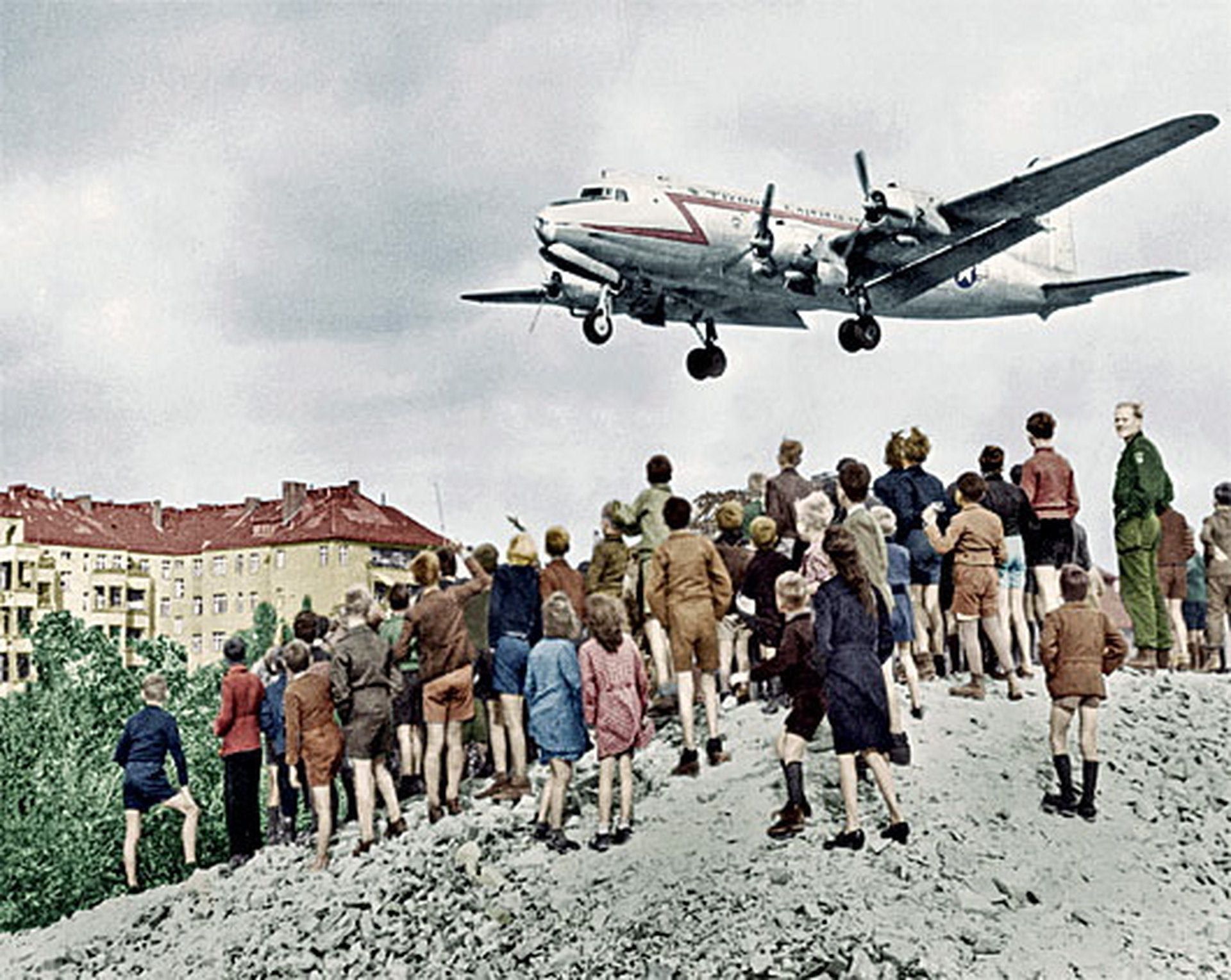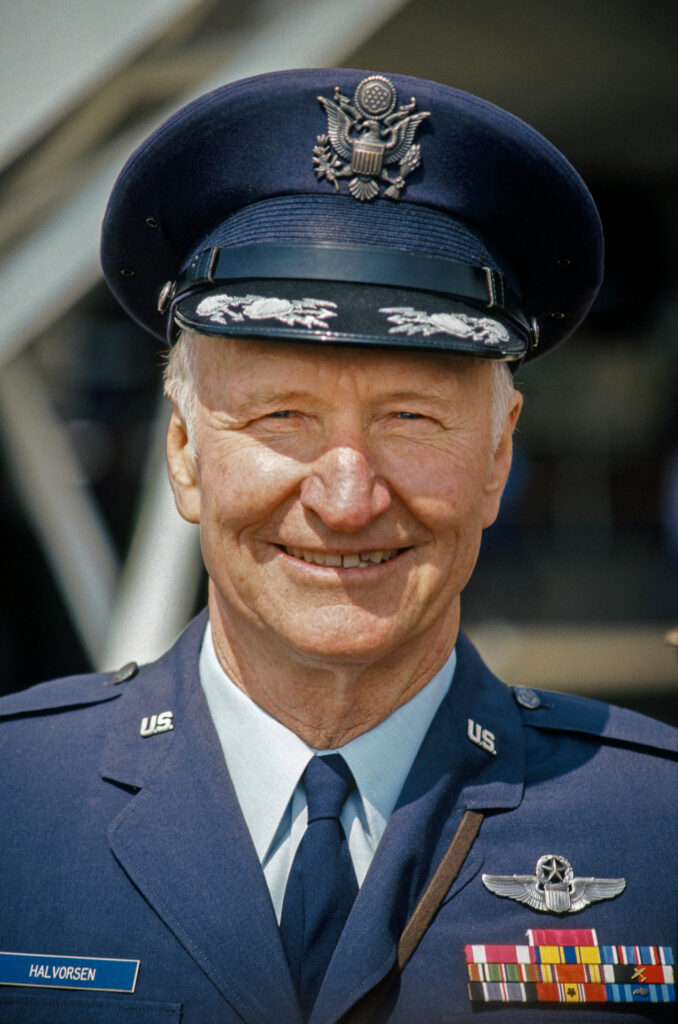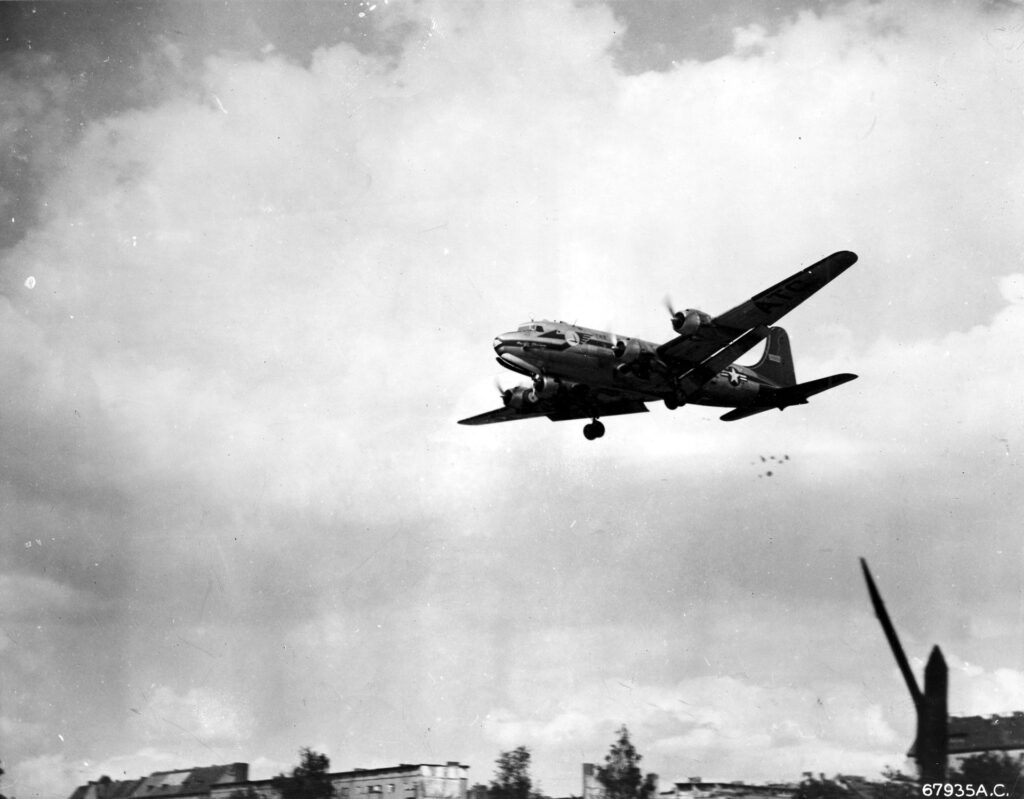The Candy Bomber of Berlin

In a city divided by war and desperation, a simple act of kindness took flight. This is the story of the Berlin Airlift’s most human mission—a mission born not of strategy but of the heart. As Thanksgiving approached in 1948, one man’s small promise became a symbol of hope for a city on the brink. Join me as we step into the skies of Berlin and uncover the story of the ‘Candy Bomber’ and the Thanksgiving that lifted more than spirits—it lifted an entire city.

It was the autumn of 1948, and West Berlin found itself at the epicenter of a rapidly escalating Cold War. Following the devastation of World War II, Germany had been carved into four occupation zones controlled by the United States, the United Kingdom, France, and the Soviet Union. Berlin, though situated entirely within the Soviet zone, was similarly divided into four sectors. As tensions between the Soviet Union and the Western Allies grew, the city became a flashpoint in the struggle for influence over Europe.

In June 1948, the Soviets implemented a full blockade, cutting off all road, rail, and canal access to West Berlin. Their aim was clear: to starve the city into submission and force the Allies to abandon their sectors. Food, fuel, and other essentials dwindled rapidly. For the 2.5 million residents of West Berlin, it seemed as if the future would bring only hunger and despair.

The Western Allies, however, refused to back down. Rather than retreating, they launched the Berlin Airlift, a bold logistical operation to supply the city entirely by air. It was an audacious plan, one that initially seemed impossible. The first flights, nicknamed “Operation Vittles” by American forces and “Operation Plainfare” by the British, began on June 26, 1948. What was intended as a temporary measure quickly grew into a monumental effort.

By November 1948, the airlift was in full swing. Each day, planes landed at Tempelhof Airport in Berlin every few minutes, delivering coal to keep homes warm, flour for baking bread, and medicine to keep the sick alive. The operation required Herculean coordination, with pilots flying in treacherous weather and ground crews working around the clock to unload supplies and prepare planes for their return trips. Despite the dangers, spirits were high among the aircrews, who took pride in their mission to sustain a besieged city.
Lt. Gail Halvorsen: The Candy Bomber

Gail Halvorsen was not the kind of man who sought the spotlight. Born on October 10, 1920, in Salt Lake City, Utah, he grew up on a small farm in rural America. From a young age, Halvorsen was fascinated by flight. He spent his youth watching planes soar overhead, dreaming of one day piloting his own. His modest upbringing instilled in him a strong work ethic, a deep sense of humility, and an unwavering belief in doing what was right.
When World War II began, Halvorsen answered the call to serve his country. He became a pilot in the U.S. Army Air Corps, flying transport missions in the Pacific Theater. The war left its mark on him. He had witnessed the destruction wrought on cities, the suffering of civilians, and the heavy toll of conflict. These experiences shaped his determination to use his skills for good in the postwar years.
In 1948, Halvorsen was stationed in Germany as part of the U.S. effort to counter Soviet aggression. It was there, in the midst of the Berlin Airlift, that his legacy was born. One day, while waiting for a cargo load to be prepared at Tempelhof Airport, Halvorsen wandered over to the airfield’s perimeter. There, behind a chain-link fence, he saw a group of children watching the planes land. They weren’t begging or shouting; they simply stood in awe, their eyes fixed on the skies. Their resilience and quiet gratitude struck a chord with him.
Halvorsen reached into his pocket and found two sticks of gum. He passed them through the fence, watching as the children carefully divided the gum and even shared the wrappers to smell. Overwhelmed by their joy at such a small gesture, Halvorsen made a promise: he would return with more candy. “I’ll wiggle my wings so you know it’s me,” he told them.

True to his word, Halvorsen began fashioning tiny parachutes out of handkerchiefs and dropping chocolate and gum from his plane. His fellow pilots noticed and joined in, turning the small act of kindness into what became known as “Operation Little Vittles.” Word of Halvorsen’s efforts reached the U.S., sparking an outpouring of support. Candy manufacturers, schoolchildren, and ordinary citizens donated tons of sweets, ensuring that every child in Berlin could experience a moment of joy amidst the hardship.
Halvorsen’s compassion went beyond the candy drops. He often visited Berlin hospitals to play with young patients and teach them how to blow bubbles. To him, the airlift wasn’t just about delivering supplies—it was about reminding the people of Berlin that they weren’t alone, that someone cared.
Thanksgiving and Operation Little Vittles

As Thanksgiving approached, Halvorsen’s candy drops had become a symbol of hope. The holiday provided an opportunity to deepen the connection between the Allies and the people of Berlin. In addition to the usual cargo of coal and food, U.S. forces arranged for traditional Thanksgiving meals to be flown in, complete with turkey and cranberry sauce. For many Berliners, these meals were a reminder of kindness and humanity in the face of adversity.
By Thanksgiving, “Operation Little Vittles” had delivered more than three tons of candy. To the children of Berlin, Halvorsen was a hero—not because of the chocolate, but because he showed them that someone cared enough to bring light into their darkened world. To Halvorsen, it was never about heroism. As he would later say, “It was a heck of a lot better to feed them than to kill them.”
As the Berlin Airlift drew to a close, it became more than a story of planes and supplies. It was a story of resilience, compassion, and connection. The Thanksgiving of 1948, marked by meals of gratitude and candy drifting from the skies, symbolized something greater—the triumph of kindness over adversity, of humanity over division.
Lt. Gail Halvorsen’s simple act of kindness transcended its moment, reminding the world of the power of small gestures. His candy drops became more than parachutes of sweets; they were parachutes of hope. The Candy Bomber’s legacy is etched not just in history books but in the hearts of those he touched.
In a divided world, the Berlin Airlift—and the Thanksgiving within it—proved that compassion can bridge even the widest chasms. As we look to the skies, let us remember that sometimes, the greatest victories are not won by force, but by the strength of the human spirit.
I highly recommend you check out the video I created for this post on BAP’s YouTube channel. I found actual footage of the Berlin Airlift and added a small clip to my video. You won’t be disappointed!
Thanks again, and I’ll see you in the next one!
Discover more from Buffalo Air-Park
Subscribe to get the latest posts sent to your email.
